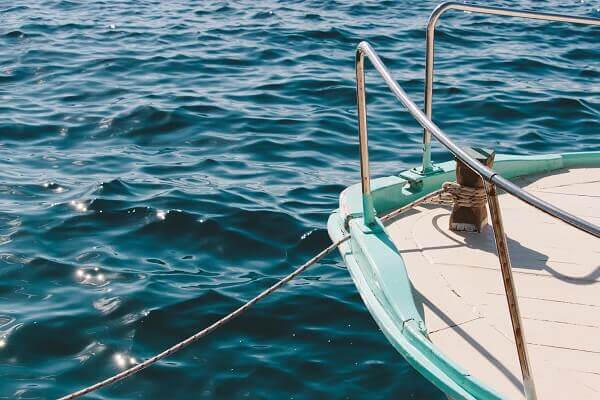Anchoring a pleasure boat is a practice that is often repeated when we go from cove to cove enjoying the coast from the sea. The anchoring manoeuvre anchoring a vessel to a certain place by means of a rope or chain so that the boat is fixed. It is a fundamental technique when chartering a yacht, sailboat or motorboat
Anchoring is an art that can be mastered with practice and for which a number of issues need to be taken into account. The fact is that, in order to ensure the safety of this manoeuvre and to avoid inconvenience to other vessels anchored close to our vessel, it is necessary to take a number of precautions.
In this post we provide some of the basic tips for the anchoring manoeuvre, although it is worth remembering that anchoring is influenced by many factors factors such as bottom type, weather conditions, currents, etc..
And, of course, the place chosen and the regulations governing the anchoring of boats. For example, buoy anchoring is very common in the Balearic Islands with the aim of preserving posidonia.
responsive] [responsive [/responsive]
[/responsive]Tips and precautions when anchoring a boat
We will start with some tips and precautions for anchoring a boat, dinghy or sailboat safely:
- The role of the anchorThe function of the anchor. This heavy iron or steel device is attached on board by a chain or anchor line, which is cast into the water so that it is fixed to the bottom and prevents the boat from being swept away by the wind or currents.
- Anchoring with the wind on the bow. To begin the anchoring manoeuvre, it is essential to locate where the wind is coming from and to anchor with the wind on the bow.
- The nautical chartThe nautical chart. This representation will help us to choose a good anchoring place. The most suitable are the coves that are most sheltered from the wind. You should also think about anchoring in a good anchorage or type of bottom (preferably sandy, avoiding mud and rock).
- Depth and the probeThe depth and the probe. Thanks to the depth sounder, a rope with a piece of lead, we can measure the depth of the water. This action is fundamental in anchoring and establishes, in general terms, that the length of the chain must be at least three times the height at high tide.
- Borneo circleCircle of borneo. The borneo is the movement of the boat around it, which will determine how much safety distance we need from other boats at anchor or the coast itself. This circle will depend on the length of our anchor line. The depth and weather conditions will determine the length of the line to be dropped for a safe bollarding ratio. All boats will end up pointing into the wind, when the wind changes the boats will move with the bow pointing into the new wind, this action is called bracing.
Anchoring manoeuvre
After getting to know these basics, it is time for anchoring:
- The first thing to do is to check the environment and determine the right gap.
- With the anchor line ready, we will approach the chosen spot at a very slow speed (although with enough start to be able to steer), always facing into the wind.
- At the chosen point we cut the start and stop the boat.
- We release the anchor and when it reaches the bottom we reverse while releasing more chain little by little so that the line does not accumulate next to the anchor. You can use a windlass, an electric or manual machine that helps to raise the anchor on board.
- Once all the anchor line that we had previously determined has been strung out, we will tie the line to a bight or cleat.
- If the boat does not stop when the backhaul test is carried out at low engine power, the anchor must be raised again and the manoeuvre repeated in order to fix it properly.
 [/responsive]
[/responsive]Boat anchoring regulations
Spanish regulations stipulate that all vessels must have an anchor line, the length of which may not be less than five times the length of the vessel.
In addition, as stated in the regulations on anchoring boats, it is forbidden to anchor in the access channels to ports and coves. It is also forbidden to anchor on a buoyed beach or in properly marked bathing areas.
Sail and anchor in Ibiza
If you want to put your sailing skills into practice this summer, A30KNudos offers you the BOAT HIRE and sailing boats and catamarans, as long as you have the qualifications required to sail. And if you like sailing but don't have the required training, it won't be a problem, as you will be able to rent a boat with skipper or skipper and discover how the art of anchoring is done.






